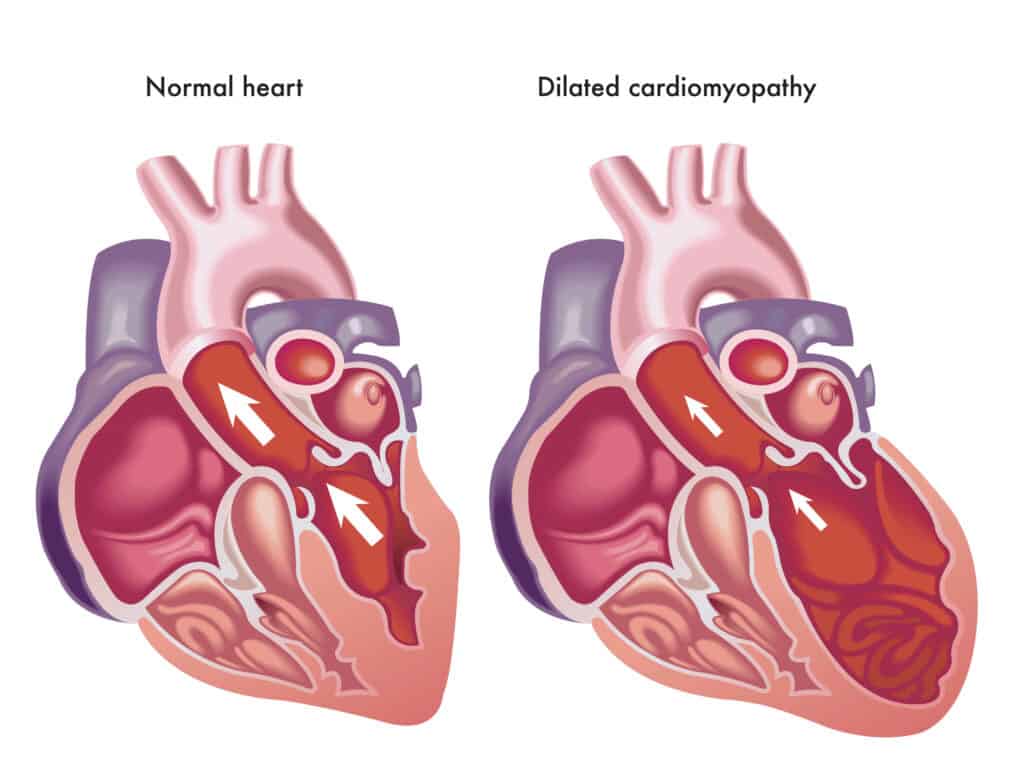The Difficulty in Diagnosing Hypertrophic Cardiomyopathy
Hiding in Plain Sight: The Difficulty in Diagnosing Hypertrophic Cardiomyopathy
Hypertrophic Cardiomyopathy is a disease of the heart muscle that affects the heart’s ability to pump. Properly diagnosing hypertrophic cardiomyopathy can avoid a decline in a patient’s quality of life.
This particular cardiomyopathy involves primarily the left ventricle (LV) and/or intraventricular septum, causing it to become abnormally thick (hypertrophied) in the absence of any known underlying condition. Hypertrophic Cardiomyopathy is primarily inherited (genetic) but some instances remain idiopathic (the pathogenesis is unknown).

The Importance of Diagnosis of Hypertrophic Cardiomyopathy
Properly diagnosing hypertrophic cardiomyopathy can avoid a decline in a patient’s quality of life. Hypertrophic cardiomyopathy is a chronic disease that can worsen over time and lead to other cardiac conditions.
Hypertrophic cardiomyopathy complications include:
• Arrhythmias (e.g., atrial fibrillation, ventricular arrhythmia)
• Stroke
• Heart failure with reduced ejection fraction (HFrEF)
The Complexities of Hypertrophic Cardiomyopathy Diagnosis
While the diagnosis of Hypertrophic Cardiomyopathy may be simple for some individuals, for many patients the process is complicated, lengthy, and overwhelming. Experienced providers, knowledgeable about symptomatology and manifestations of hypertrophic cardiomyopathy, may provide an accurate diagnosis and identify effective treatment regimens to effectively alleviate symptoms and prevent complications.
One issue with diagnosing hypertrophic cardiomyopathy is that patients may be asymptomatic. Some remain asymptomatic and develop symptoms over time, while other individuals experience a significant cardiac event that leads to a diagnosis of hypertrophic cardiomyopathy.
Additionally, hypertrophic cardiomyopathy symptoms may be non-specific or mimic other diseases such as coronary artery disease, aortic stenosis, or other comorbid conditions. Even those providers who are experienced in the field of cardiology may have difficulty navigating the symptomology to a diagnosis of hypertrophic cardiomyopathy. Diagnosis may require a patient to undergo several diagnostic tests.
Hypertrophic Cardiomyopathy Symptoms
Symptoms of hypertrophic cardiomyopathy may include:
- Dyspnea (shortness of breath); exertional dyspnea
- Exercise or activity intolerance
- Palpitations
- Dizziness, presyncope, or syncope (fainting)
- Postprandial angina pectoris (chest pain following a meal)
Finally, the symptoms may vary based on various conditions such as those described below. Health care providers will need to evaluate patients both at rest and during exertion and have patients track their symptoms in varying conditions.
- Exertion level
- Overall functional status
- Hydration
- Blood pressure
- Environmental factors such as temperature and humidity
Medical History, Exam and Diagnostic Tests
Hypertrophic cardiomyopathy diagnosis requires an initial medical and family history along with symptom evaluation. Symptoms consistent with a diagnosis of hypertrophic cardiomyopathy include arrhythmias, heart failure, or sudden, unexplained death. An evaluation of family history for three generations will help pinpoint those relatives who have potential risk for hypertrophic cardiomyopathy as well as to identify hypertrophic cardiomyopathy risk in the current patient.
A cardiac exam will aid in the detection of associated symptoms of hypertrophic cardiomyopathy by identifying abnormal findings during rest as well as during patient activity.
Diagnostic tests such as an electrocardiogram (ECG/EKG), echocardiogram (echo), chest radiograph, cardiac MRI with gadolinium-based contrast agents, ambulatory rhythm monitor, stress echo/stress test, hemodynamic cardiac catheterization, cardiac angiography, positron emission tomography (PET), or even myocardial biopsy (not common), can provide results and data points that will aid health care providers in the diagnosis of hypertrophic cardiomyopathy.
Following a definitive diagnosis, the patient and health care team will identify potential treatment options. The use of shared decision-making enables everyone involved in the process to express their perspectives and work towards solutions that are the best for each particular patient and their circumstances.
As part of a team of health care providers that include primary care, cardiovascular and other specialists, a referral of a patient to a hypertrophic cardiomyopathy Center of Excellence can provide confirmation of a diagnosis and treatment options to include lifestyle, pharmacotherapy, the use of devices, surgery, and genetic testing.
Hypertrophic Cardiomyopathy May Be a Family Affair
Hypertrophic cardiomyopathy is often inherited in an autosomal dominant manner, with each child of a parent with HCM having a 50% chance of inheriting the condition.
Genetic testing in the patient is an essential component of diagnosis when hypertrophic cardiomyopathy is suspected. Depending on the results, testing first-degree relatives (parents, siblings, children) may be performed to identify those who are at risk for hypertrophic cardiomyopathy and yet unrecognized. This is key for diagnosis and treatment in these individuals who may otherwise be at risk for a significant cardiac event.
Because of the genetic transmission, it is recommended that patients who are planning to become pregnant meet with a genetic counselor.
Resources for HCPs, Patients, and Families
In addition to references such as the recently updated practice guideline for Hypertrophic Cardiomyopathy (2020 AHA/ACC Guideline for the Diagnosis and Treatment of Patients with Hypertrophic Cardiomyopathy: Executive Summary[i]), Health care providers can look to Hypertrophic Cardiomyopathy Centers of Excellence (COE) for diagnostic and treatment support, and research on hypertrophic cardiomyopathy.
Hypertrophic Cardiomyopathy organizations such as the Hypertrophic Cardiomyopathy Association, and support groups at the local, regional or national level can make a significant positive impact on patients, families, and health care providers.
PCNA is committed to sharing information about this often-under-recognized disease. Find education and clinical resources for health care providers and patients on the PCNA website. New resources for health care providers and patients are being released throughout 2022—so check back frequently! In the meantime, you can learn more about hypertrophic cardiomyopathy and current guidelines.
